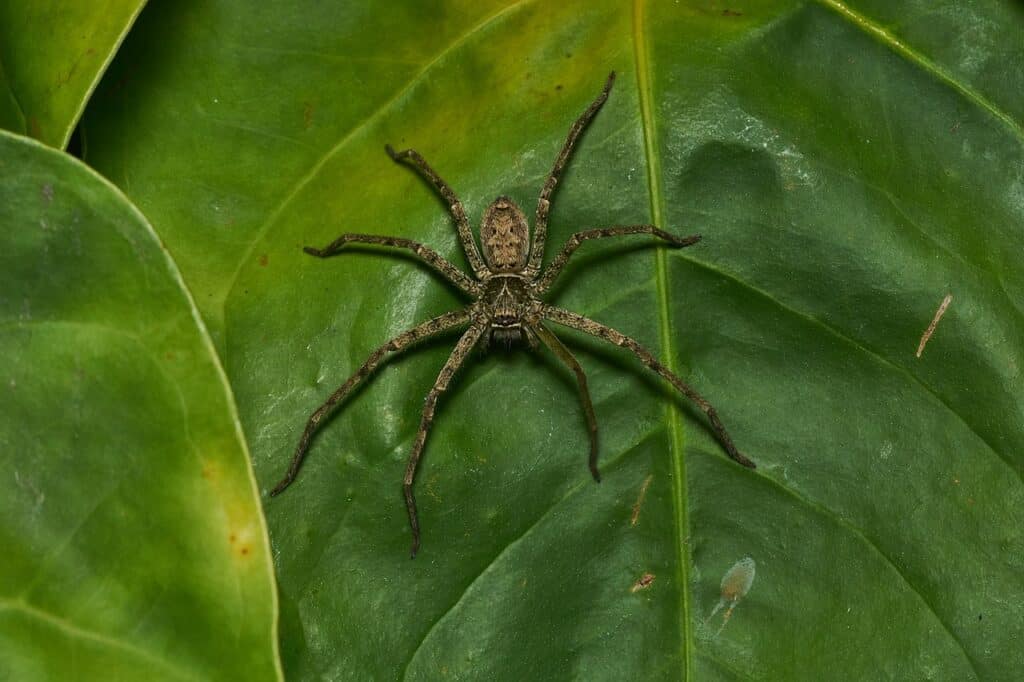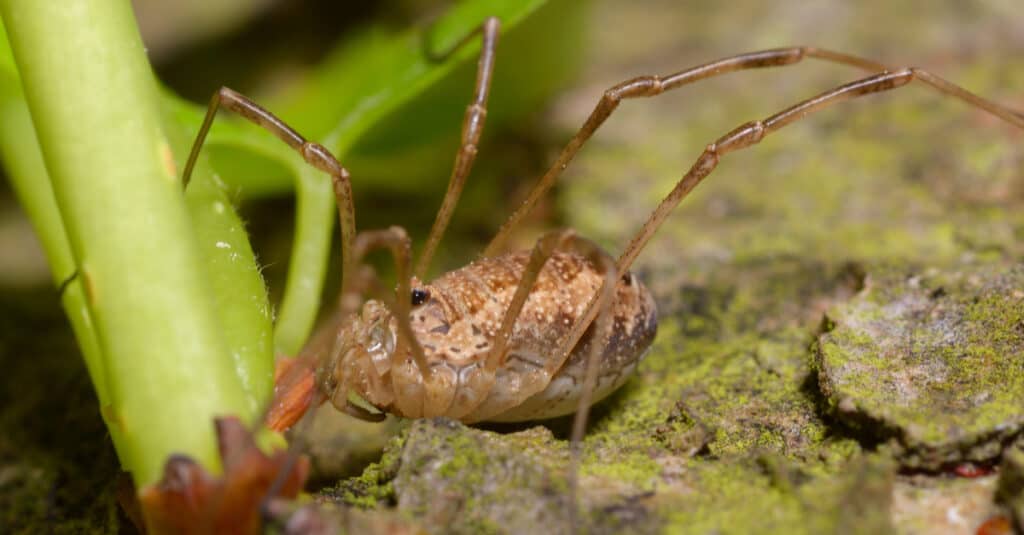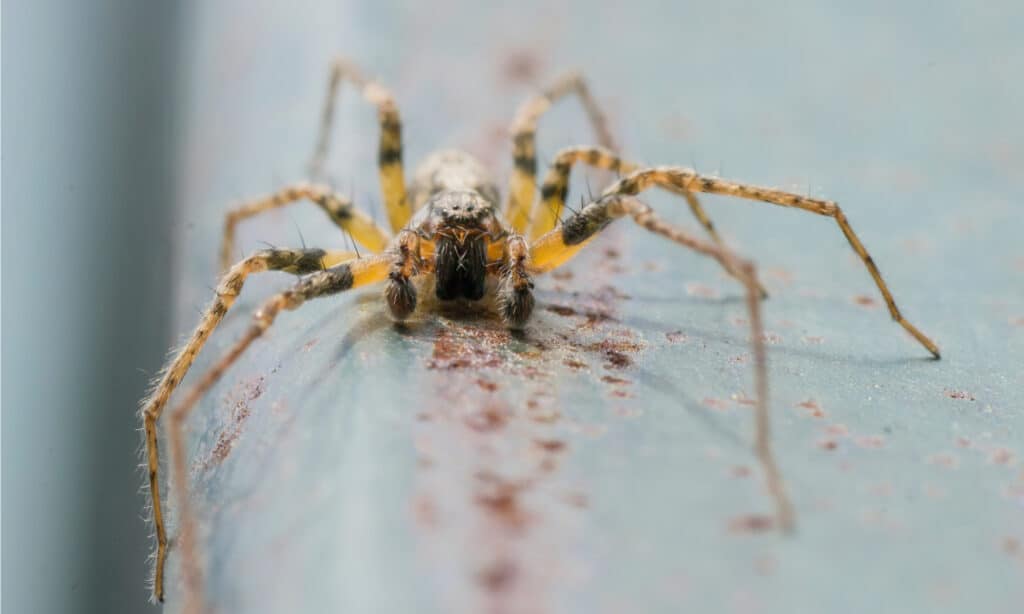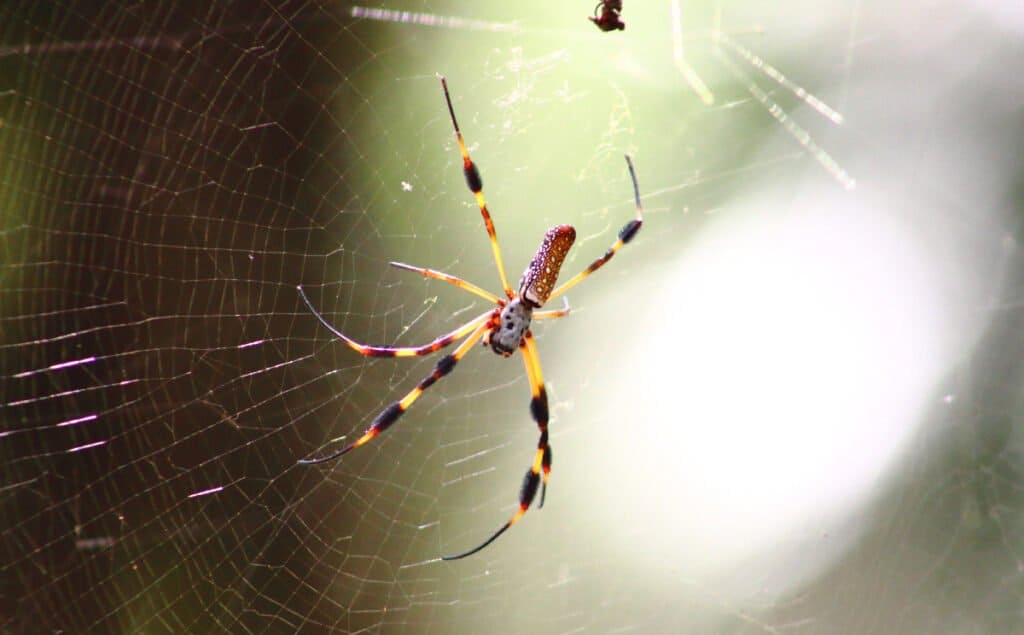The state of Hawaii is a beautiful tropical paradise with a rich culture and incredible sights. Despite being a small state, it’s abundant in biodiversity. In fact, it may be one of the most biologically and geologically diverse places in the world! Among the incredible species of animals that you’ll find in Hawaii are spiders. While most of them are small, there are some rather large ones as well. Today, we’re going to look at 5 of the biggest spiders in Hawaii!
We’ll show you how big they get, what family they belong to, and whether you need to worry about a bite from them! The next time you book a trip to this group of lovely islands, you can keep a sharp lookout for these spiders!
1. Cane Spider (Pantropical Huntsman)

Pantropical huntsman spiders are very large and powerful creatures.
©© 2017 Jee & Rani Nature Photography / CC BY-SA 4.0 via Wikimedia Commons – License
| Scientific Name | Size | Danger to Humans |
|---|---|---|
| Heteropoda venatoria | 4-6 inches | Have a mildly venomous bite that can cause swelling and headaches |
The cane spider is the largest spider in Hawaii. This spider goes by a variety of names including the huntsman spider as well as the giant crab spider. This particular creature is usually tan, cream, brown, and black. The cane spider’s cephalothorax is typically dark, and the abdomen is often mostly a light color.
Their hairy legs are typically light in color but have black spots. Their bodies are about an inch long, and their legs can measure 3-5 inches on their own. These spiders are large, but they are still very fast. You may find them in a home, but you are better off leaving them alone.
They’re not aggressive, but they can bite if you try to kill them. Their bite isn’t fatal, but it can lead to some uncomfortable symptoms like swelling at the bite site and headaches.
2. Giant Daddy Long Legs

Giant daddy long legs have very long legs.
©Krysja/Shutterstock.com
| Scientific Name | Size | Danger to Humans |
|---|---|---|
| Artema atlanta | 3-5 inches | Bites cause local pain but are not dangerous |
The Artema atlanta is also known as the giant daddy long legs, and it lives up to that name. Their bodies are only about 0.3-0.4 inches long, but their legs can help them measure upwards of five inches! As their name suggests, most of their body length stems from their legs.
The giant daddy long legs’ body is light brown and tan, with black spots near its joints and black bands on its legs. The giant daddy long legs can deliver a bite, and that bite will cause local pain, but it won’t cause serious harm to a human.
You can find the daddy long legs in homes and scurrying along forest floors, but they enjoy dark and quiet places.
3. Barn Funnel Weaver

The barn funnel weaver has a unique nest and a powerful attack.
©Korovko Gleb/Shutterstock.com
| Scientific Name | Size | Danger to Humans |
|---|---|---|
| Tegenaria domestica | 1.5 inches | Bites rarely break the skin |
The barn funnel weavers are black, tan, and brown spiders that build complex, funnel-shaped webs for catching prey. They wait for prey to disturb their nest and then attack them. They drag the prey back to their nest and consume them.
These spiders usually have stripes and patterns on their abdomen along with stripes on their legs. These spiders aren’t commonly found in places where humans are active. They will live in basements and attics, but they also spend a lot of time in tall grass.
If you run into these spiders, don’t worry. They’re rather shy and not aggressive. They can potentially bite a person, but those bites rarely even break the skin.
4. Golden Silk Orb Weaver

The golden silk orb weaver builds a web that measures nearly 5 feet in diameter.
©Max Rossa/Shutterstock.com
| Scientific Name | Size | Danger to Humans |
|---|---|---|
| Trichonephila clavipes | 1-2 inches | The bite causes local pain, but the venom doesn’t hurt humans. |
The golden silk orb weaver is known for spinning beautiful golden silk for its webs. These spiders are also known for having a variety of colors in their body, including black, brown, gray, white, yellow, orange, and even silver.
Usually, their abdomen is yellow or another bright color with light patterns, their cephalothorax is white, and their legs are brown with bands of black at the joints and then black at the ends.
The spiders are most likely to be spotted outdoors, where they build webs and capture their prey. However, they can also be seen indoors, too. They can bite humans and inflict some pain, but their venom isn’t deadly, and the overall impact is best described as minimal.
5. Hawaiian Garden Spider

The Hawaiian garden spider is colorful and has a unique web.
©Arik.wib/Shutterstock.com
| Scientific Name | Size | Danger to Humans |
|---|---|---|
| Argiope appensa | 2.5 inches | The bite causes moderate pain, swelling, and redness at the site. |
The Hawaiian garden spider is a little more colorful than other common garden spiders. The spider is known for having black, white, yellow, orange, and gray in its coloration. Typically, it has yellow on its abdomen, a mottled white, gray, and black cephalothorax, and legs banded with yellow, orange, white, and black.
These spiders are easily identified by their web, which features zig-zag patterns called stabilimenta. That feature may help their nests avoid disruption from other animals.
These spiders can bite, and it will cause swelling, pain, and redness. However, that’s the worst that you’re likely to get from these bites. All in all, the Hawaiian garden spider is a beautiful spider that makes unique webs.
These five biggest spiders in Hawaii are not very large compared to the largest spiders in the world. Nevertheless, these creatures are sizable and interesting. Fortunately, most of the largest spiders in Hawaii are not going to cause any lasting damage if they bite you.
The best plan of action is to admire spiders from afar. Don’t trap or kill them for fun unless they’re causing an infestation in your home. If that’s the case, then it’s a good idea to seek out the help of professionals because spiders can be rather crafty at hiding!
The photo featured at the top of this post is © © 2017 Jee & Rani Nature Photography / Jeevan Jose, Kerala, India / CC BY-SA 4.0 – License / Original
Thank you for reading! Have some feedback for us? Contact the AZ Animals editorial team.






